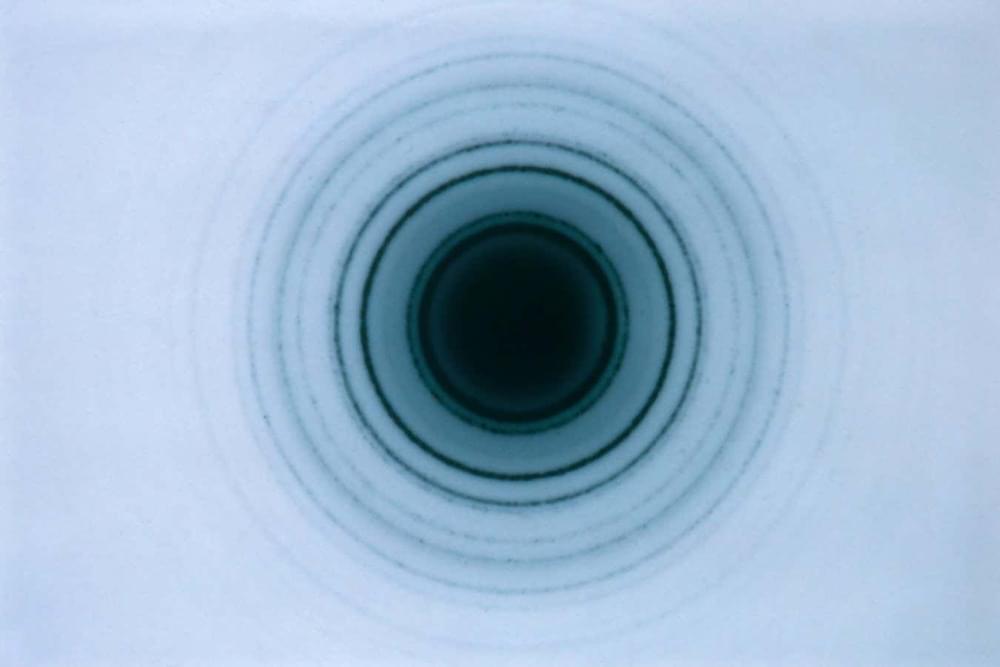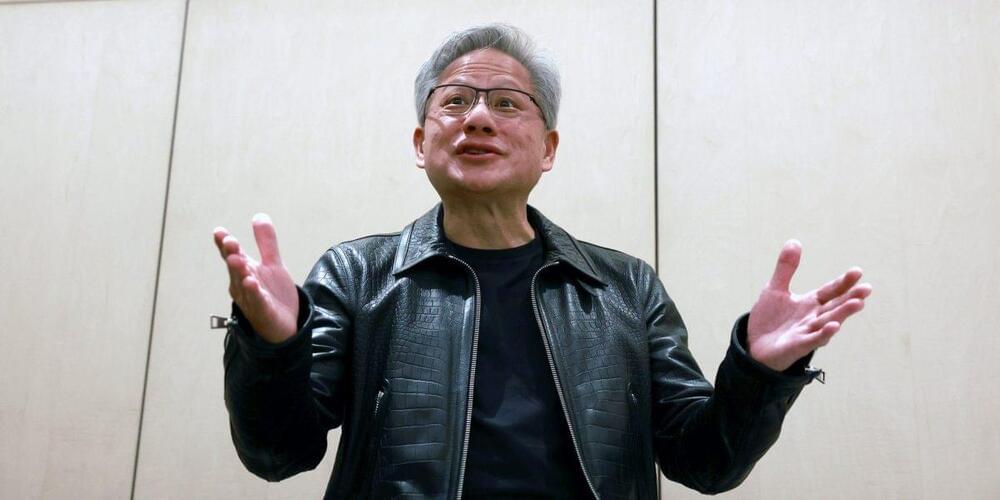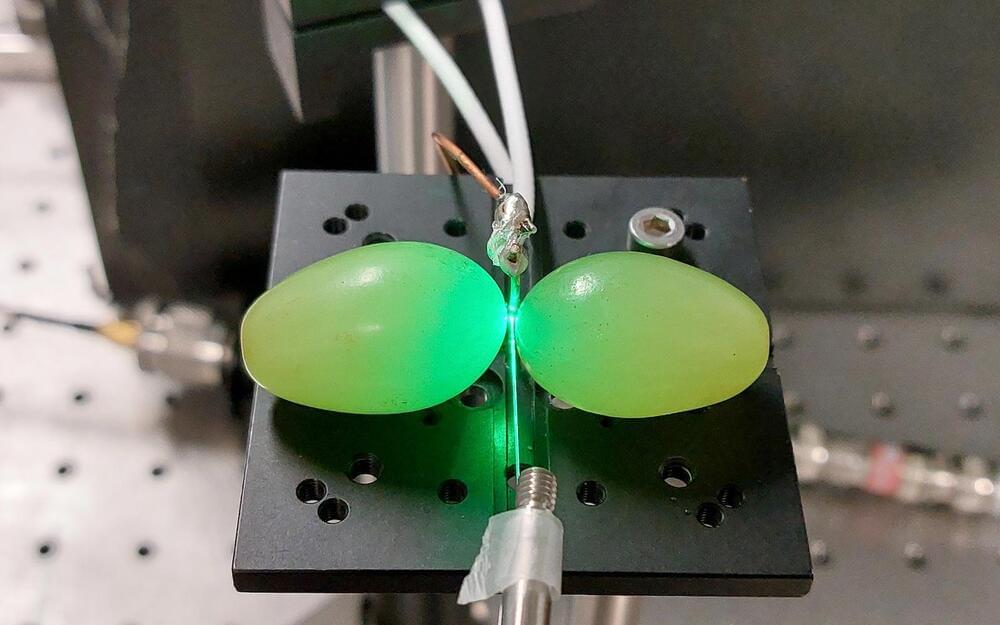The “expansion protocol” would be a lot more invasive than you’d enjoy.
Category: quantum physics – Page 176


Physicists bend atoms in ‘impossible’ experiment
Entire atoms have been put through a classic quantum experiment for the first time and the breakthrough could lead to better detectors for picking up the gravitational waves that ripple across the universe.
By Alex Wilkins

A new calculation of the electron’s self-energy improves determination of fundamental constants
When quantum electrodynamics, the quantum field theory of electrons and photons, was being developed after World War II, one of the major challenges for theorists was calculating a value for the Lamb shift, the energy of a photon resulting from an electron transitioning from one hydrogen hyperfine energy level to another.
The effect was first detected by Willis Lamb and Robert Retherford in 1947, with the emitted photon having a frequency of 1,000 megahertz, corresponding to a photon wavelength of 30 cm and an energy of 4 millionths of an electronvolt—right on the lower edge of the microwave spectrum. It came when the one electron of the hydrogen atom transitioned from the 2P1/2 energy level to the 2S1/2 level. (The leftmost number is the principal quantum number, much like the discrete but increasing circular orbits of the Bohr atom.)
Conventional quantum mechanics didn’t have such transitions, and Dirac’s relativistic Schrödinger equation (naturally called the Dirac equation) did not have such a hyperfine transition either, because the shift is a consequence of interactions with the vacuum, and Dirac’s vacuum was a “sea” that did not interact with real particles.


Supermarket Grapes Spark a Quantum Technology Revolution
Scientists at Macquarie University have discovered a novel way to enhance quantum sensor performance using ordinary grapes.
By utilizing the water content and specific size of grapes, they created strong magnetic field hotspots that improve the efficiency of microwave-based quantum sensing.
Supermarket Grapes and Quantum Sensors.
Space-Time: The Biggest Problem in Physics
What is the deepest level of reality? In this Quanta explainer, Vijay Balasubramanian, a physicist at the University of Pennsylvania, takes us on a journey through space-time to investigate what it’s made of, why it’s failing us, and where physics can go next.
Explore black holes, holograms, “alien algebra,” and more space-time geometry: https://www.quantamagazine.org/the-un…
00:00 — The Planck length, an intro to space-time.
1:23 — Descartes and Newton investigate space and time.
2:04 — Einstein’s special relativity.
2:32 — The geometry of space-time and the manifold.
3:16 — Einstein’s general relativity: space-time in four dimensions.
3:35 — The mathematical curvature of space-time.
4:57 — Einstein’s field equation.
6:04 — Singularities: where general relativity fails.
6:50 — Quantum mechanics (amplitudes, entanglement, Schrödinger equation)
8:32 — The problem of quantum gravity.
9:38 — Applying quantum mechanics to our manifold.
10:36 — Why particle accelerators can’t test quantum gravity.
11:28 — Is there something deeper than space-time?
11:45 — Hawking and Bekenstein discover black holes have entropy.
13:54 — The holographic principle.
14:49 — AdS/CFT duality.
16:06 — Space-time may emerge from entanglement.
17:44 — The path to quantum gravity.
——-
VISIT our website: https://www.quantamagazine.org.
LIKE us on Facebook: / quantanews.
FOLLOW us Twitter: / quantamagazine.
Quanta Magazine is an editorially independent publication supported by the Simons Foundation: https://www.simonsfoundation.org

IBM will release the largest ever quantum computer in 2025
Following successful early demonstrations of linking two quantum computing chips, IBM is aiming to break records for the largest quantum computer yet by combining many of them in parallel.
Tachyons Explained: Faster-Than-Light Physics and the McGinty Equation
Tachyons, the hypothetical particles that travel faster than light, have long fascinated scientists and enthusiasts. In this video, we explore how the McGinty Equation (MEQ) serves as a groundbreaking tool in understanding these elusive particles. Delve into the world of quantum mechanics, fractal geometry, and gravity as we uncover the potential of tachyons to revolutionize science and technology. From their intriguing properties, such as imaginary mass and energy reduction at high speeds, to their implications for faster-than-light communication and interstellar exploration, this video is a journey into uncharted territories of physics.
We also discuss the quest to detect tachyons, innovative experimental methods, and the role of MEQ in guiding researchers. Could tachyons be the key to unlocking new dimensions, explaining dark matter and energy, or understanding the origins of the universe? Join us in this deep dive into the unknown and discover the potential future of tachyon research.
#Tachyons #McGintyEquation #QuantumMechanics #FractalGeometry #FasterThanLight #ImaginaryMass #QuantumPhysics #AdvancedPhysics #TachyonResearch #LightSpeedPhysics #QuantumFieldTheory #ScientificDiscovery #SpaceTime #InterstellarTravel #DarkMatter #DarkEnergy #FasterThanLightCommunication #PhysicsBreakthrough #CosmicMysteries #HypotheticalParticles
Exploring Zero Point Energy: Thermodynamics Demystified
Imagine a world where energy is limitless, clean, and ever-present—a world powered by Zero Point Energy (ZPE). In this video, we delve into the fascinating concept of ZPE, a quantum mechanics phenomenon that reveals the hidden energy within the quantum vacuum. Discover how the McGinty Equation offers a theoretical framework for understanding this incredible energy source while addressing the challenges of thermodynamics. From the intriguing interplay of quantum fluctuations and fractal geometry to the enduring laws of physics, this video explores the science, potential, and limitations of Zero Point Energy.
Join us as we navigate the quantum sea, examining how energy whispers through the fabric of space-time and why harnessing ZPE may be one of humanity’s most ambitious quests. Whether you’re intrigued by the mysteries of the universe, cutting-edge scientific theories, or the potential for revolutionary energy solutions, this video offers a compelling exploration of one of quantum physics’ most captivating topics.
#ZeroPointEnergy #QuantumMechanics #VacuumEnergy #McGintyEquation #CleanEnergy #FractalGeometry #SpaceTime #QuantumVacuum #EnergyFluctuations #Thermodynamics #PerpetualMotion #Entropy #QuantumFieldTheory #RenewableEnergy #InfiniteEnergy #PhysicsExplained #QuantumScience #FuturisticEnergy #EnergySolutions #QuantumPhysics